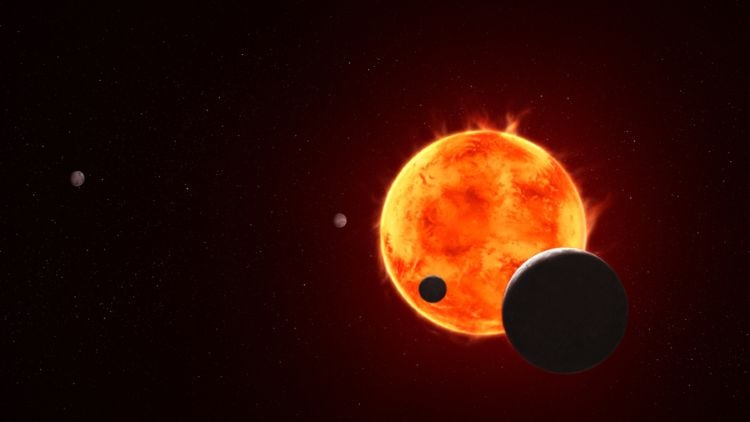Science
Scientists Uncover Microbial Biosignatures for Exoplanet Exploration

Research into the potential for life in the clouds of exoplanets is advancing as a team of scientists investigates microbial biosignatures in planetary atmospheres. Their recent manuscript outlines laboratory experiments designed to identify these biosignatures, which could lead to innovative methods for detecting life beyond Earth. This study not only expands our understanding of extraterrestrial environments but also sets the stage for future missions aimed at exploring habitability in the universe.
The researchers examined seven aerial microbial strains found in Earth’s atmosphere, including species such as Modestobacter versicolor and Roseomonas vinacea. Using spectroscopy, they analyzed the light reflected by these microbes to determine if their unique spectral features could signify life in the atmospheres of distant planets. Findings indicated that each microbial sample displayed distinct biosignatures, potentially enabling scientists to identify them in exoplanet clouds.
New Pathways for Life Detection
The study asserts, “Here, we present an additional path for searching for life on Earth-like exoplanets: the search for biopigments as signs of life in clouds.” The researchers emphasize that these biopigment signatures provide a critical reference for interpreting potential biosignatures in the reflected light of exoplanets during upcoming missions. This research introduces a third paradigm in the quest for extraterrestrial life, recognizing clouds as potential habitats for observable ecosystems.
Motivating this study are historical precedents, such as the 1976 work by renowned astronomer Dr. Carl Sagan and astrophysicist Dr. Ed Salpeter, who proposed the existence of life forms in Jupiter’s atmosphere. They theorized four types of organisms—“Sinkers,” “Floaters,” “Hunters,” and “Scavengers”—which would inhabit specific ecological niches within Jupiter’s clouds. This foundational research has inspired contemporary scientists to revisit the concept of life in atmospheric environments.
The study also aligns with the goals of the Habitable Worlds Observatory (HWO), a planned space telescope set for launch in the 2040s. HWO aims to utilize spectroscopy to analyze 25 habitable exoplanets for biosignatures, opening new avenues for exploration. The research team proposes that the biosignatures identified could be detectable by HWO, enhancing our search for life beyond Earth.
Advancements in Exoplanet Atmosphere Studies
Technological advancements have paved the way for significant discoveries in exoplanet atmospheres. The James Webb Space Telescope (JWST) has successfully observed various exoplanets, including WASP-39 b and WASP-17 b, both located hundreds of light-years from Earth. For instance, JWST identified water, carbon dioxide, and carbon monoxide in the atmosphere of WASP-39 b, while quartz particles were detected in the high altitudes of WASP-17 b’s atmosphere.
Additionally, JWST’s recent studies involving the TRAPPIST-1 system, which is approximately 41 light-years away, have generated interest. This system contains seven Earth-sized planets, with three situated in the habitable zone. Although recent findings did not confirm an atmosphere around TRAPPIST-1 e, they highlighted the need for further investigation to better understand its potential for harboring life.
As the search for biosignatures in exoplanet atmospheres continues to evolve, researchers remain optimistic about the insights that future studies will unveil. With the upcoming HWO and ongoing observations from JWST, the scientific community is poised to deepen its understanding of life beyond our planet. Through persistent exploration and innovation, the quest for extraterrestrial life remains a captivating frontier in modern science.
-

 Science2 months ago
Science2 months agoInventor Achieves Breakthrough with 2 Billion FPS Laser Video
-

 Top Stories2 months ago
Top Stories2 months agoCharlie Sheen’s New Romance: ‘Glowing’ with Younger Partner
-

 Health2 months ago
Health2 months agoCommunity Unites for 7th Annual Into the Light Walk for Mental Health
-

 Entertainment2 months ago
Entertainment2 months agoDua Lipa Aces GCSE Spanish, Sparks Super Bowl Buzz with Fans
-

 Health2 months ago
Health2 months agoCurium Group, PeptiDream, and PDRadiopharma Launch Key Cancer Trial
-

 Top Stories2 months ago
Top Stories2 months agoFormer Mozilla CMO Launches AI-Driven Cannabis Cocktail Brand Fast
-

 Entertainment2 months ago
Entertainment2 months agoMother Fights to Reunite with Children After Kidnapping in New Drama
-

 World2 months ago
World2 months agoIsrael Reopens Rafah Crossing After Hostage Remains Returned
-

 World2 months ago
World2 months agoR&B Icon D’Angelo Dies at 51, Leaving Lasting Legacy
-

 Business2 months ago
Business2 months agoTyler Technologies Set to Reveal Q3 Earnings on October 22
-

 Health2 months ago
Health2 months agoYouTube Launches New Mental Health Tools for Teen Users
-

 Health2 months ago
Health2 months agoNorth Carolina’s Biotech Boom: Billions in New Investments








